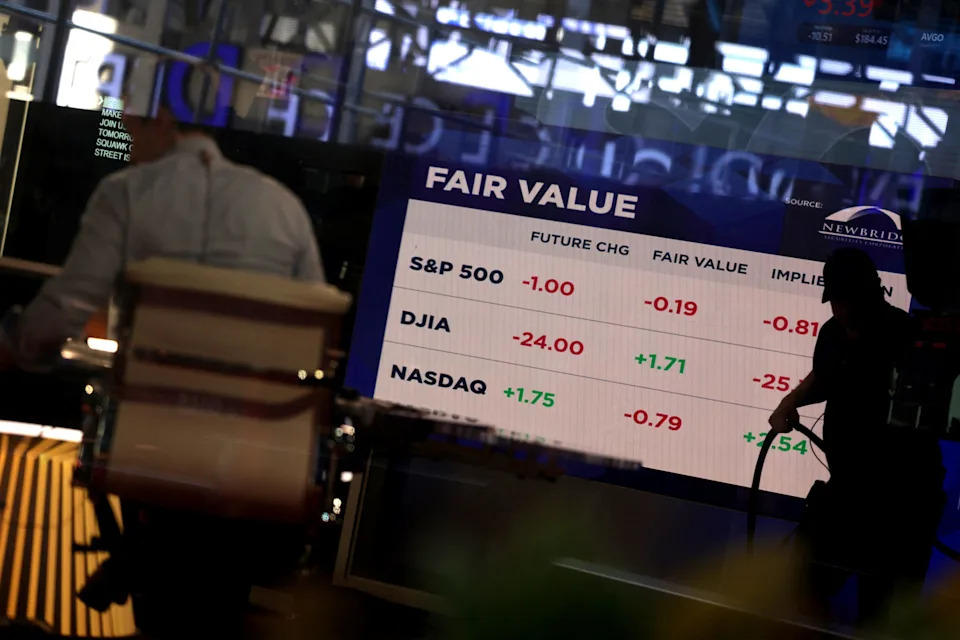News
Is the 60/40 rule making a comeback? How to mix and match your stocks and bonds.
If you invest according to the classic 60/40 rule, with three fifths of your nest egg in stocks and two fifths in bonds, then take a moment to pat yourself on the back: It’s a pretty good strategy.
That’s the conclusion of a new report from Morningstar, the financial services firm.
A “plain-vanilla” 60/40 portfolio, comprising stocks and investment-grade bonds, earned about 15% interest in 2024, Morningstar found.
The 60/40 portfolio isn’t so popular these days. It laid an egg in 2022, when both stocks and bonds tanked . Some observers concluded the 60/40 rule was dead .
In 2022, Morningstar reports, investors could have done better by diversifying their portfolio beyond stocks and bonds, adding in such assets as real estate and gold.
Over the longer term, however, the 60/40 portfolio has performed consistently well.
How does the 60/40 portfolio stack up against 100% stocks?
To measure the merits of a 60/40 portfolio, Morningstar compared it against two other portfolios, one made up entirely of stocks, the other broadly diversified across 11 kinds of assets.
Here’s how they stacked up:
Morningstar also looked at “risk-adjusted” returns, a calculus that considers the risk-to-reward ratio of each investment strategy.
Looking at rolling, 10-year averages, after adjusting for risk, the analysis found that a 60/40 portfolio outperformed an all-stock portfolio roughly four-fifths of the time over the past five decades.
The point of the paper, according to one author, is to illustrate that a simple 60/40 portfolio performs pretty well. An everyday investor does not necessarily have to branch out into commodities, gold and real estate in order to diversify.
“The takeaway point is that diversification doesn’t have to be overly complicated,” said Amy Arnott , portfolio strategist at Morningstar and co-author of the April 22 report. “You are getting a pretty significant diversification benefit just from adding bonds to an all-stock portfolio.”

'Boring' bonds provide a hedge against volatile stocks
The 60/40 rule is a fundamental principle of investing. Stocks can yield robust annual returns, but they are volatile. Bonds provide modest but stable income.
Bonds are supposed to provide a hedge against stocks. When stocks go down, bonds go up – or, at least, they don’t go down very much.
In 2022, however, the financial market seemed to turn upside down . Stocks lost 18.6% of their value that year, as measured by the S&P 500. Bonds lost 13.7% of their value, according to the Vanguard Total Bond Market Index. Inflation pushed that figure to 20%, the worst bond return in 97 years, according to a NASDAQ analysis.
Those numbers prompted many investors to hunt for alternatives to bonds .
But the new Morningstar report suggests that a simple portfolio of stocks and bonds can still offer enough diversification for the average investor.
Morningstar is not saying that a 60/40 portfolio will outperform the stock market. Instead, its analysis found that a 60/40 mix generally offers a relatively high return relative to the risk. When you balance reward against risk, the 60/40 portfolio often does better than either the stock market – which is inherently risky – or a more varied investment portfolio.
“We’re saying that if you take risk into account,” a 60/40 portfolio “did historically outperform a stocks-only benchmark,” Arnott said. “You’re getting a smoother ride, basically.”

Who should follow the 60/40 rule?
Arnott cautions that the 60/40 portfolio isn’t for everyone.
“If you are a younger investor, in your 20s or 30s, you don’t necessarily have to have a 40% position in bonds,” she said. “I think the 60/40 portfolio is most appropriate for somebody who is approaching retirement, or in retirement.”
The longer your money remains invested, the greater advantage you will gain by keeping most of it in stocks, financial experts say. If you won’t need the money for another 20 or 30 years, you will have plenty of time to ride out the bear markets.
“It makes sense for long-term investors to be mostly in the stock market, as long as they can stand the ups and downs,” said Robert Brokamp , a senior adviser at The Motley Fool.
“Now, for those who are close to or in retirement, then I think the 60/40 is actually a good starting point, because you need to balance risk and reward.”
Catherine Valega , a certified financial planner in Winchester, Massachusetts, advises most of her working-age clients to keep at least 80% of their investments in stocks, “and sometimes as high as 100% stocks,” she said. “The 60/40 is way not aggressive enough if you are a younger investor.”
Valega is wary of the bond market. Bonds are volatile in 2025 , largely because of President Trump ’s ongoing trade war and uncertainty about interest rates and inflation.
Instead, Valega has been looking for high returns on cash-equivalent investments, including certificates of deposit and money market funds . Both have consistently offered interest rates of 4% or higher this year. They can provide stability to an investment portfolio, just like bonds.
This article originally appeared on USA TODAY: Is the 60/40 rule making a comeback in retirement savings?

